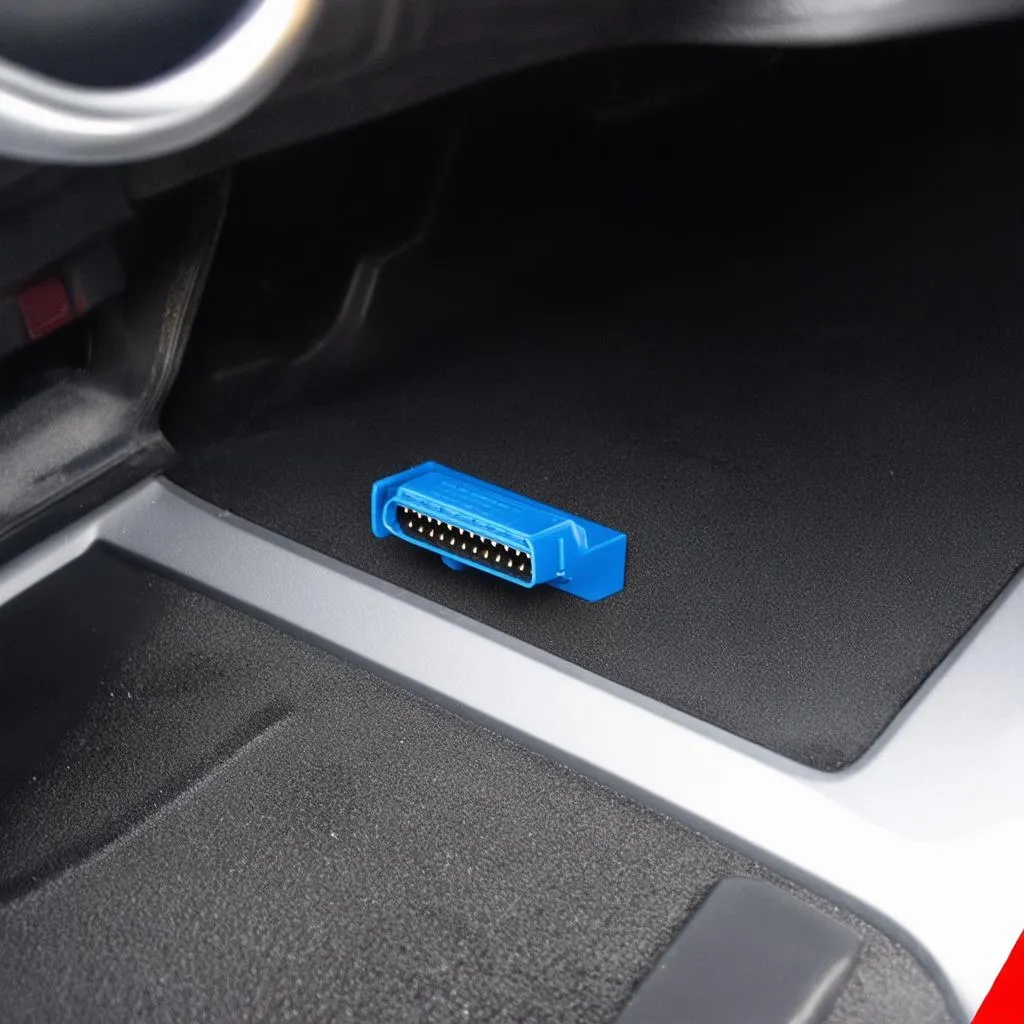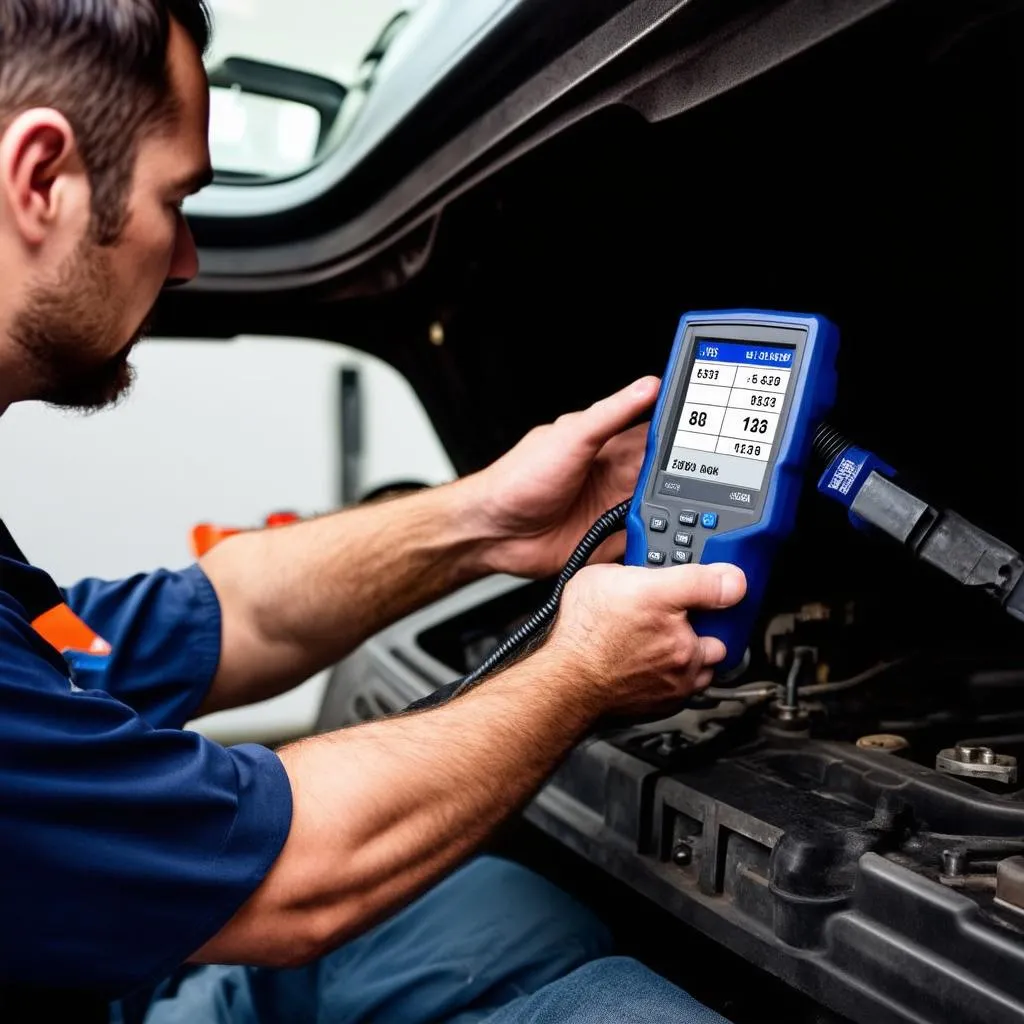Ever felt like your car is speaking a language you don’t understand? Those blinking dashboard lights, the occasional sputter… they’re trying to tell you something! Luckily, your car has a built-in translator, a little port known as the OBD connector.
Imagine this: you’re driving down a scenic route, windows down, music playing, when suddenly, a warning light pops up on your dashboard. Frustrating, right? It’s like your car is handing you a coded message. This is where the OBD connector comes in. Just like a doctor uses a stethoscope to diagnose your health, a mechanic uses a device that connects to the OBD port to “talk” to your car’s computer and understand those warning lights.
Decoding the Mystery: OBD Connector Meaning and Importance
OBD stands for On-Board Diagnostics. Think of it as your car’s self-diagnostic system. The OBD connector is the physical port, usually located under the driver’s side dashboard, that allows access to this system.
Why is it so important?
- Early Problem Detection: It helps identify issues before they become major headaches (and expenses!). Remember the warning light scenario? The OBD connector can tell you exactly what’s triggering it.
- Improved Car Performance: Mechanics can use the data from the OBD connector to fine-tune your car for optimal performance, like a mechanic performing acupuncture on your car’s engine for peak efficiency.
- Emissions Control: The OBD system plays a crucial role in monitoring and controlling your car’s emissions, keeping you environmentally responsible and compliant with regulations.
 OBD Connector Location
OBD Connector Location
The Evolution of OBD: From Basic Codes to Advanced Diagnostics
The OBD system has come a long way. Early versions were basic, only capable of displaying a few simple codes. Today’s OBD-II, found in most cars made after 1996, is much more sophisticated.
- Comprehensive Data: It provides a wealth of information about your engine, transmission, emissions system, and more.
- Standardized Codes: OBD-II uses standardized codes, making it easier for mechanics (and even DIY enthusiasts!) to understand the diagnostics.
- Real-time Monitoring: You can even purchase your own OBD-II scanner to monitor your car’s performance in real-time, giving you a deeper understanding of your vehicle.
Common Questions About OBD Connectors:
- Where is the OBD connector in my car? It’s usually located under the driver-side dashboard, but the exact location can vary.
- Can I use any OBD scanner on my car? While most scanners use the standardized OBD-II protocol, some car manufacturers use slight variations. For specialized diagnostics, especially on European cars, a dealer-level scanner is often recommended.
- Can I fix my car myself using an OBD scanner? While you can identify some issues, fixing complex car problems often requires the expertise of a qualified mechanic.
 Mechanic Using OBD Scanner
Mechanic Using OBD Scanner
Beyond the Basics: OBD and the Future of Car Repair
The OBD connector is becoming increasingly important in the world of car repair. With the rise of electric vehicles and complex computer systems, the ability to access and interpret data from the OBD system will be crucial. Imagine a future where car problems are diagnosed remotely, and software updates are beamed directly to your vehicle, all thanks to the humble OBD connector.
Need Help with your car’s diagnostics?
Contact us on Whatsapp: +84767531508. We have auto repair experts available 24/7 to help you with diagnostics and software installation for your car’s systems.
Looking for more information about car diagnostics and repair?
Check out these related articles:
- 10 Pin ALDL Connector to OBD-2
- Does 2009 Mazda6 have OBD Connector?
- 1999 Toyota Avalon OBD Connector
The OBD connector is an essential part of modern car maintenance. Understanding how it works can empower you to take better care of your vehicle and address issues before they escalate.